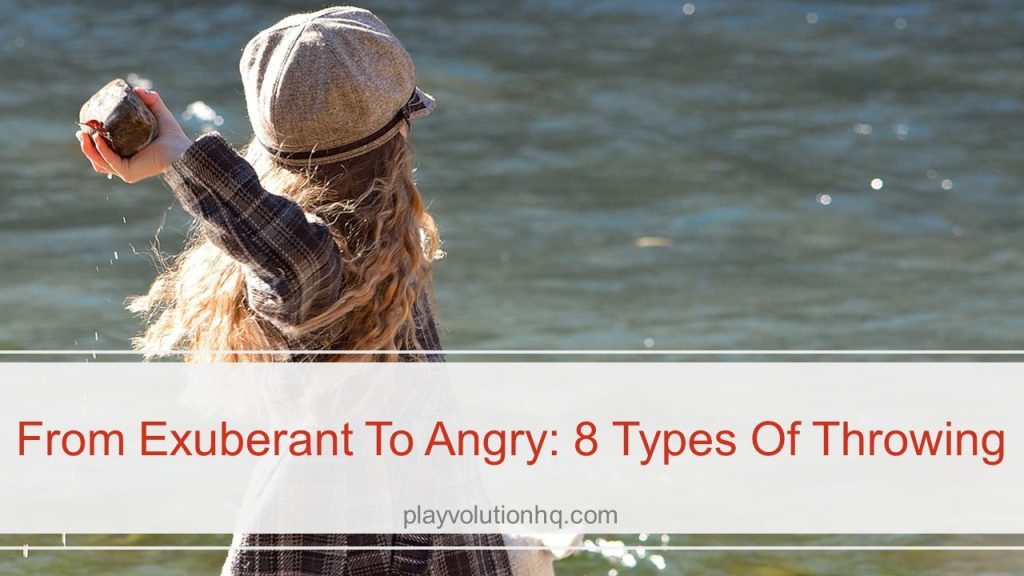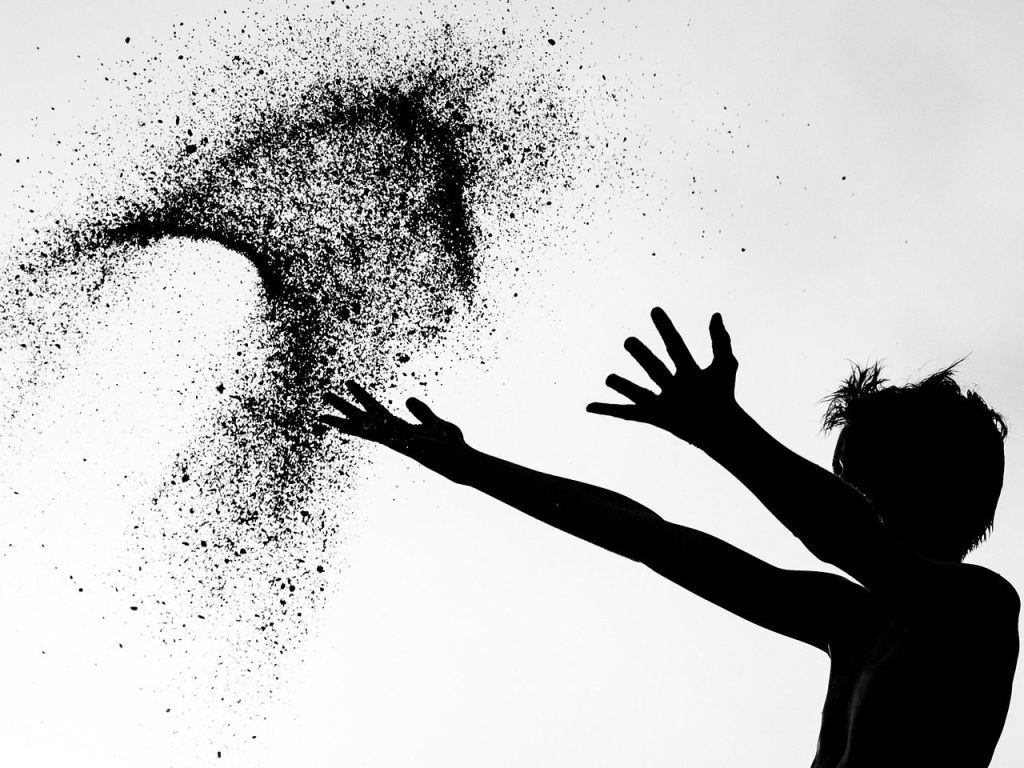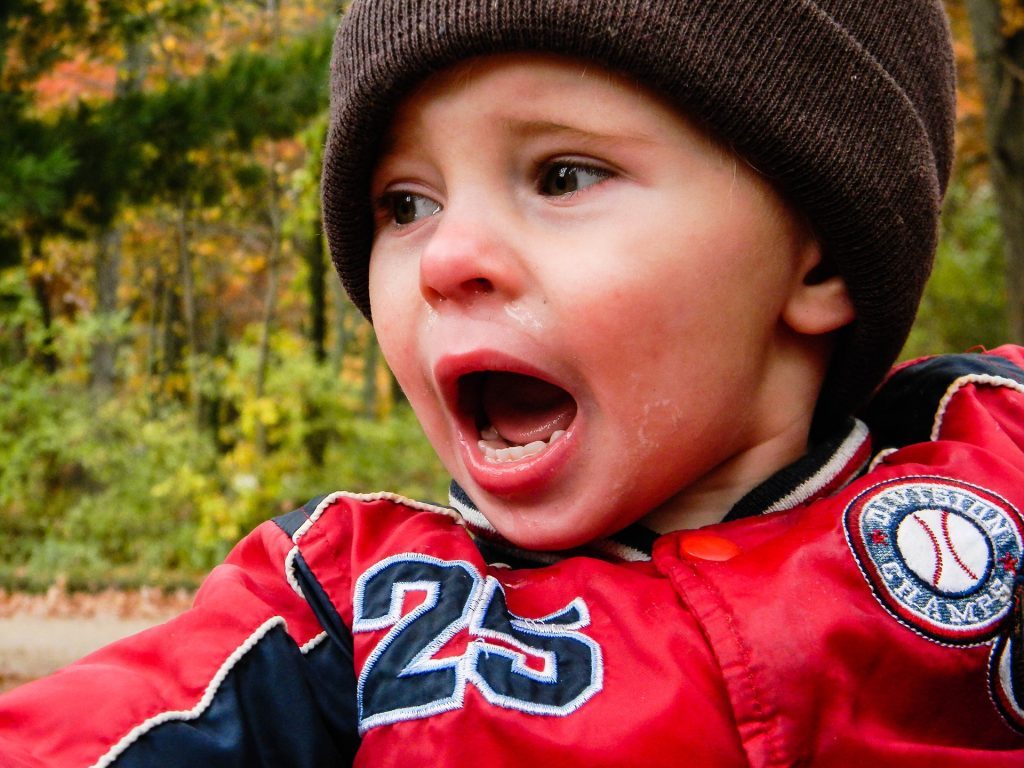
There are many types of throwing. When you pause to think about it, it might not surprise you. The problem is that adults don’t always pause to think about it. They should. A short pause–maybe one that includes a physiological sigh–may alter their reaction. Kids throw with different intentions and during differing emotional states. Adults should take those intentions and emotions into account when reacting to throwing.
Too often, children’s throwing creates friction. It gets a canned response like, “No Throwing,” and maybe a follow-up like, “Don’t make me tell you again–NO. THROWING.” Throwing is frequently labeled as a “Bad” behavior. Perpetrators are redirected, scolded, or maybe sent to time-out.
A better understanding of these 8 types of throwing may help you calibrate your reactions and reduce the friction. Some throwing may still need to be stopped, but you may find other throwing should be tolerated, sympathized with, or supported.
Let’s begin our look at the different types of throwing. First, we’ll look at two broad categories:
Accidental Throwing
Chances are you’ve seen this with mobile infants and toddlers. Picture a one-year-old shaking a block up and down–until the block goes flying. This can also happen with older children since it takes a while to hone the proprioceptive system. Until a kid’s brain and muscles are sufficiently wired together, kids don’t always know how much grip pressure to apply–so sometimes things go flying. This is most common with younger children but also happens with older children. It takes time to wire the body’s proprioceptive system. Children may not grip objects with the appropriate amount of pressure until that happens. (Here’s information on precision grip and power grip if you’re interested.)
Purposeful Throwing
Much throwing is done on purpose and for a wide range of reasons. This is 100% developmentally appropriate and supports a wide range of learning. From STEM exploration to social interaction, throwing is a path to learning. All early learning settings should make available space and materials that are throwing-friendly. Always prohibiting something that children are wired for and eager to do is punitive. There are plenty of ways to support throwing while maintaining safety and avoiding chaos. (If you need help with this, contact me with some details about your program setting, and I’d be happy to toss you some ideas.)

Let’s move down our list of 8 types of throwing. The following two are most always purposeful:
Exploratory Throwing
Throwing can also be exploratory. This is my favorite type of throwing since it’s a pathway to so much learning about the physical world. For example, children often throw sand, rocks, and other objects to explore how they move through the air, the sound they make when they land, or how they interact with the surface they impact. Children also throw things to see how adults will react—are they supportive, angry, or amused?
I’ve noticed that adult approval for exploratory throwing is generally related to the age of the child doing the throwing and the number of items being thrown. For example, a toddler throwing a block is easier to tolerate than an eight-year-old throwing a handful of glitter.

Collaborative Throwing
From ball games to board games, throwing can be collaborative. Collaborative throwing may or may not be adult sanctioned, but in my experience, of all the types of throwing, this one is easiest for adults to get behind. Maybe since it often comes as part of an adult-approved group activity. But collaborative throwing has a dark side–picture a couple of kids playing keep-away with a third child’s glove on a snow-covered playground, for example.

The 4 final types of throwing tend to be tied to emotion. These types of throwing may be intentional, accidental, or a mixture of the two.
Exuberant Throwing
Sometimes throwing happens out of sheer exuberance, excitement, and joy. Graduation cap throwing is an obvious example of purposeful exuberant throwing. An example of unintentional exuberant throwing is a one-year-old excitedly shaking a toy until it sails from his hand.

Defiant Throwing
Kids will throw as a sign of defiance to show they have some power and agency. A child engaged in exploratory sand throwing, for example, my lob another handful—with a devilish grin—after being told to stop. And then maybe one more before she is sentenced to 3 minutes in Time Out. Of all the types of throwing, this might be the hardest for adults to deal with. It’s easy to be rattled by the defiance, to let it get under our skin. The physiological sigh mentioned above can come in handy in these situations. It helps calm you down so you can respond with a clear head.
Frustrated Throwing
Imagine you’re three years old and trying to finish coloring in a purple cat you drew that looks just like the one in your favorite book. As you’re told it’ll be time for lunch in 5 minutes, and your purple marker runs dry. You search the marker cup for another without any luck. You toss the marker towards the supply shelf and scowl at a half-purple cat as a lilting voice says, “Two minutes until lunch; we should all be picking up.”
Angry Throwing
Finally, kids throw out of anger. Anger at blocks that won’t balance, anger at bedtimes that come too soon, anger at the taste of broccoli, anger at adults who don’t understand, anger at their lack of control. In emotionally charged situations, the throwing often becomes an additional offense the upset child is charged with that must be addressed with a good talking to or a trip to the time-out chair.

These last three types of throwing are common among young children who lack the language skills necessary to express themselves. It’s probably better to help them manage the emotions that led to the throwing than punish them for the act. Setting up a dedicated area with items that are safe to throw gives children a space to release their defiant, frustrated, and angry feelings.
8 Types Of Throwing Wrap Up
There are probably more types of throwing than the 8 I have outlined here. If you have some in mind, please share them in the comment section. You’re thoughts and opinions are welcome there as well.
Here are a few related links:
- I talk about the types of throwing with Lisa Murphy on this episode of the Child Care Bar And Grill podcast
- Here’s a look at trajectory schema play
- Here are 100 loose parts that support trajectory schema play
- Here’s a throwing-related post by David Cahn
Contribute content to Playvolution HQ
Brought to you by Explorations Early Learning
Browse Trainings


Author
Jeff Johnson is an early learning trainer, podcaster, and author who founded Explorations Early Learning, Playvolution HQ, and Play Haven.
In-Person And Online Training
Learn how to book an in-person or online training for your organization on these early learning topics.
Support The Site
I participate in the Amazon Services LLC Associates Program, an affiliate advertising program designed to provide a means for me to earn fees
by linking to Amazon.com and affiliate sites.
Thanks To Our Patrons
This post was made possible by patrons like these, who generously fund our work:
Supporters
Lissadell Greene Stephanie Goloway Jennifer Stark
Lagina Kozak Michelle Hankins
Marie Messinger Tamara L. Lakin
Fans
Jen Flemming Lizz Nolasco Cynthia J Bays
Susan Warner Kelly Sigalove Shawn Wolf
Vittoria Jimerson Codee Gilbert Wendy Tedford
Monica Morrell Pam Soloman Melissa Franklin
Teresa Watson Erika Felt Autumn Peele
Melissa Taylor Jahmeela Robinson Stacie Manning
Amber Maurina Terra Calamari Anne Jackson
Lagina Kozak Samantha Yeager-Cheevers
Elizebeth McCoy Sammy Cousens Ellen Cogan

Leave a Reply to Stephanie Goloway Cancel reply